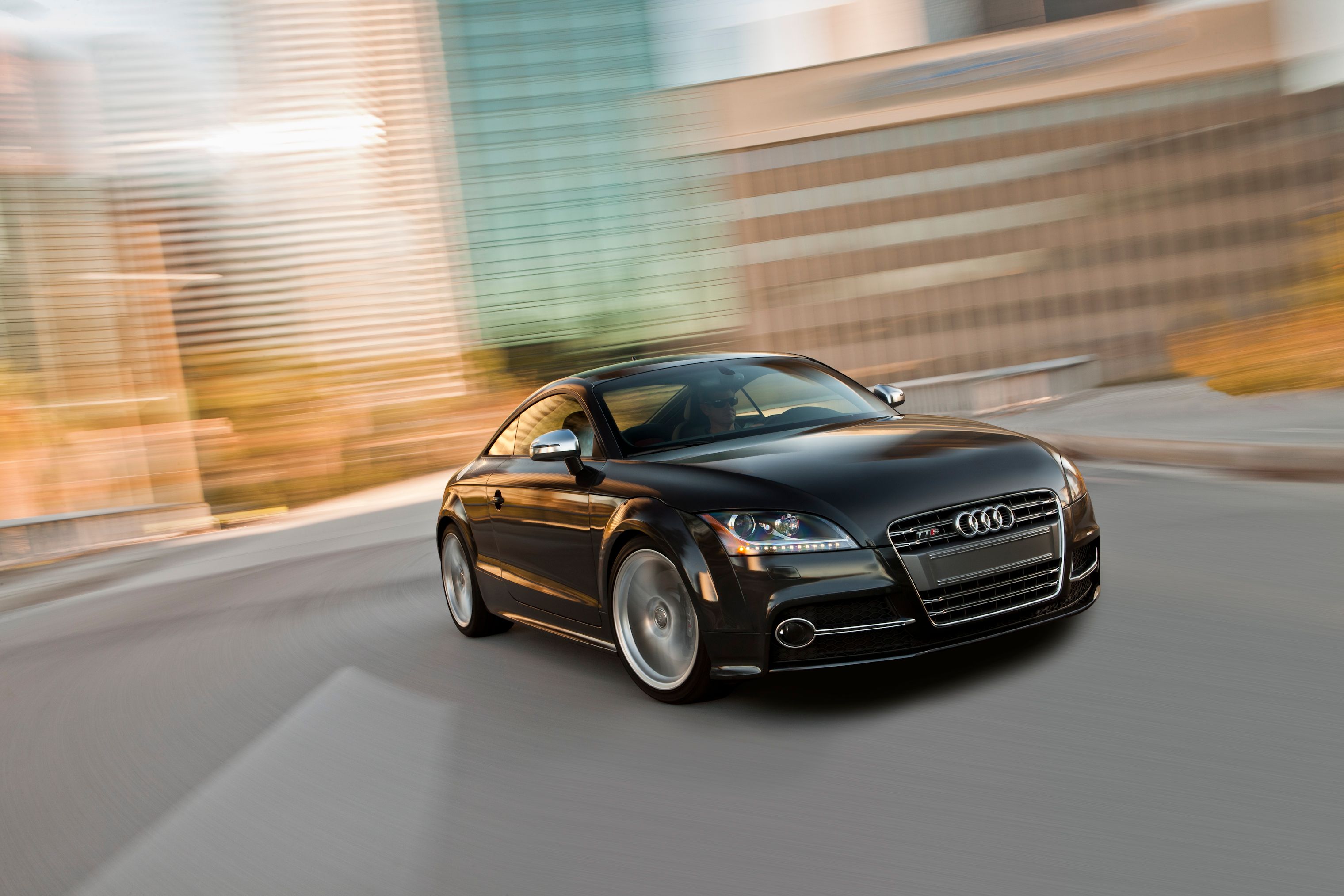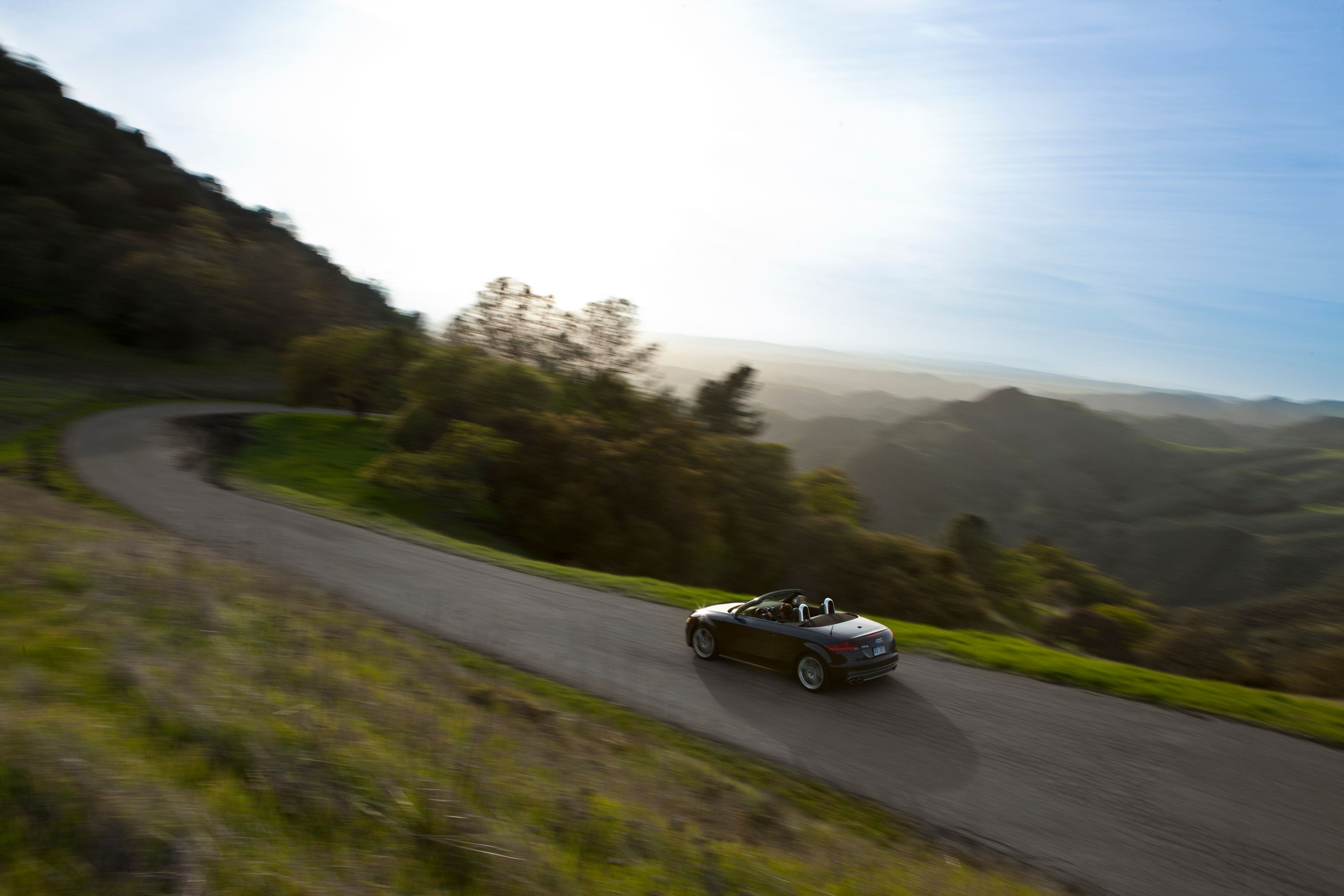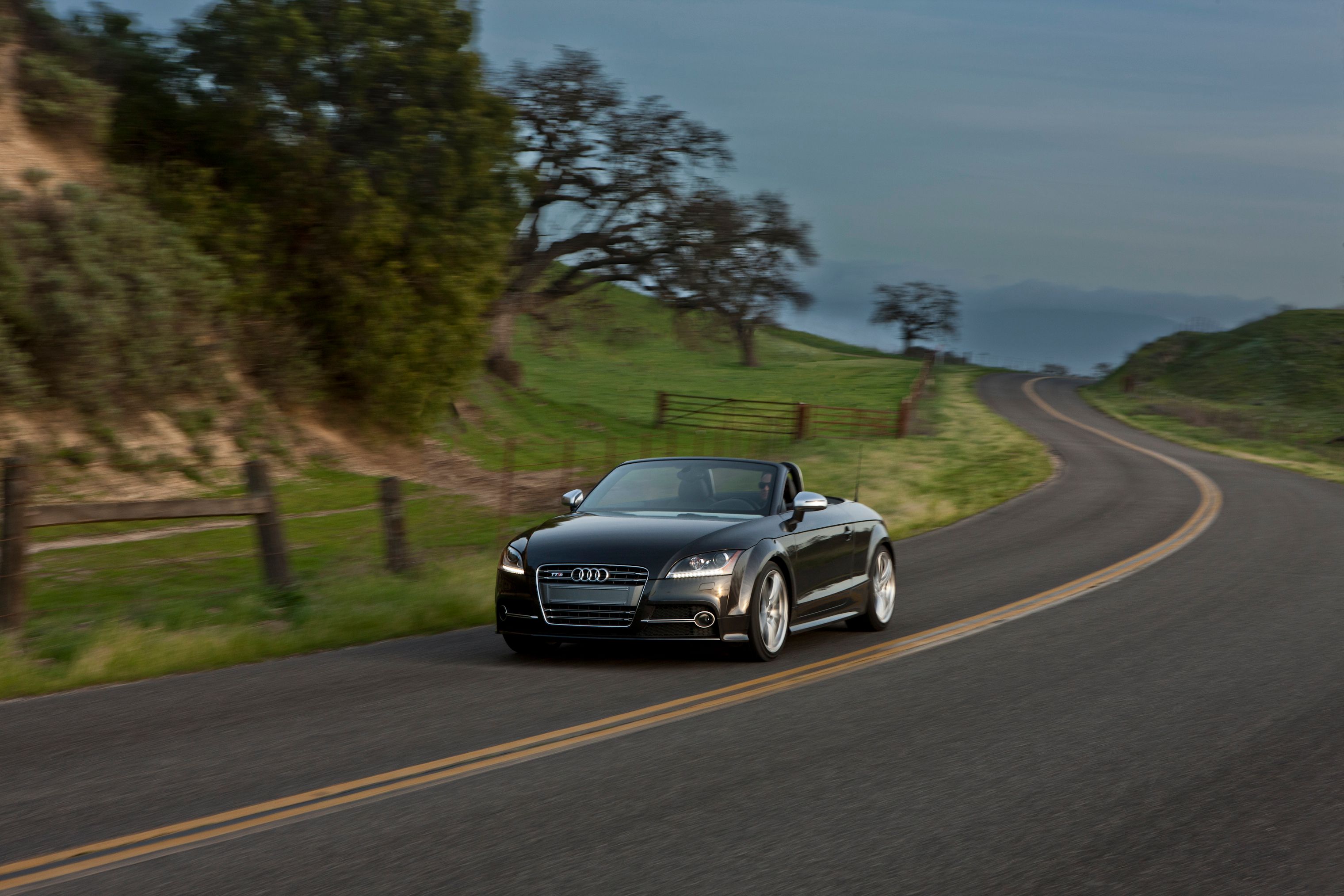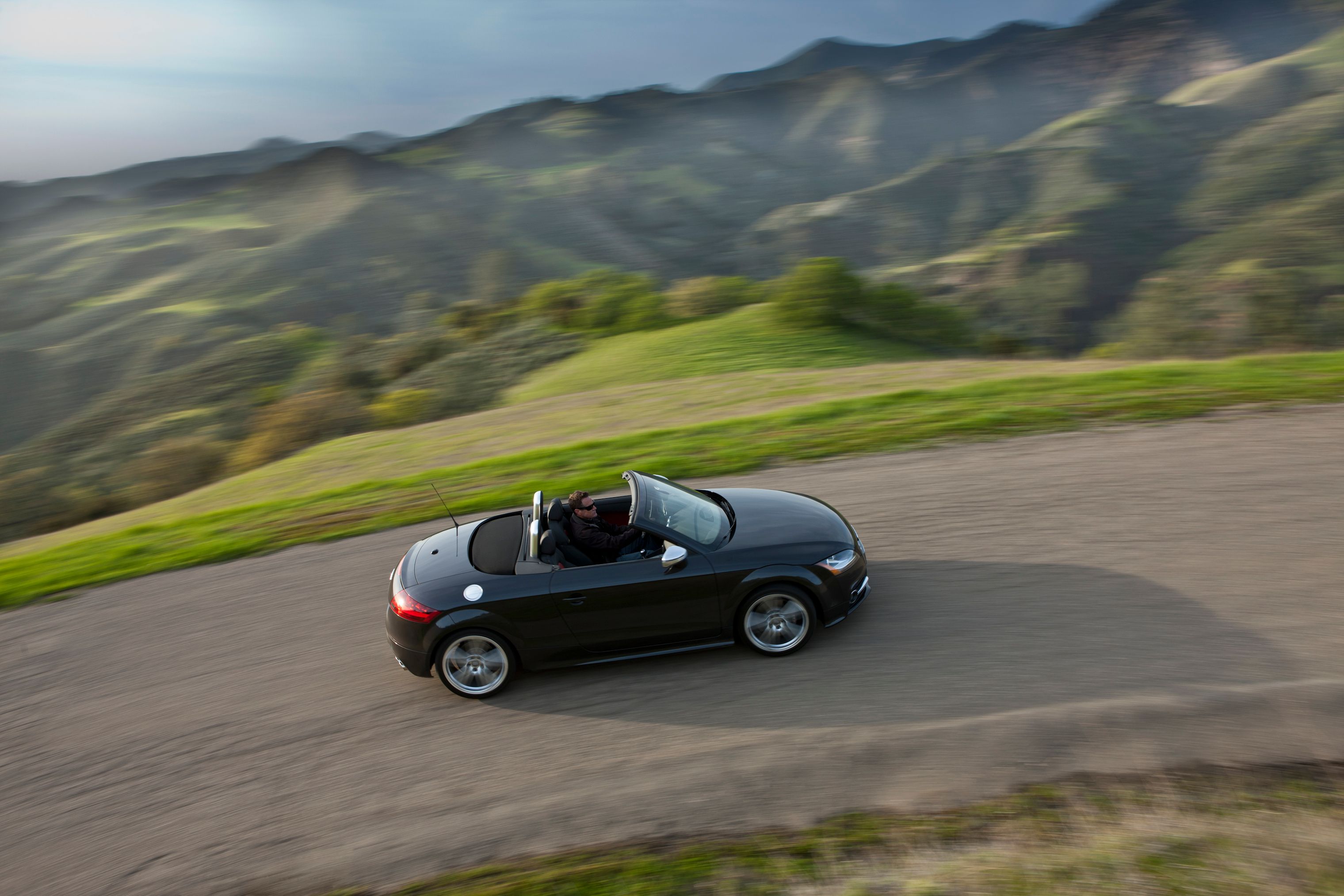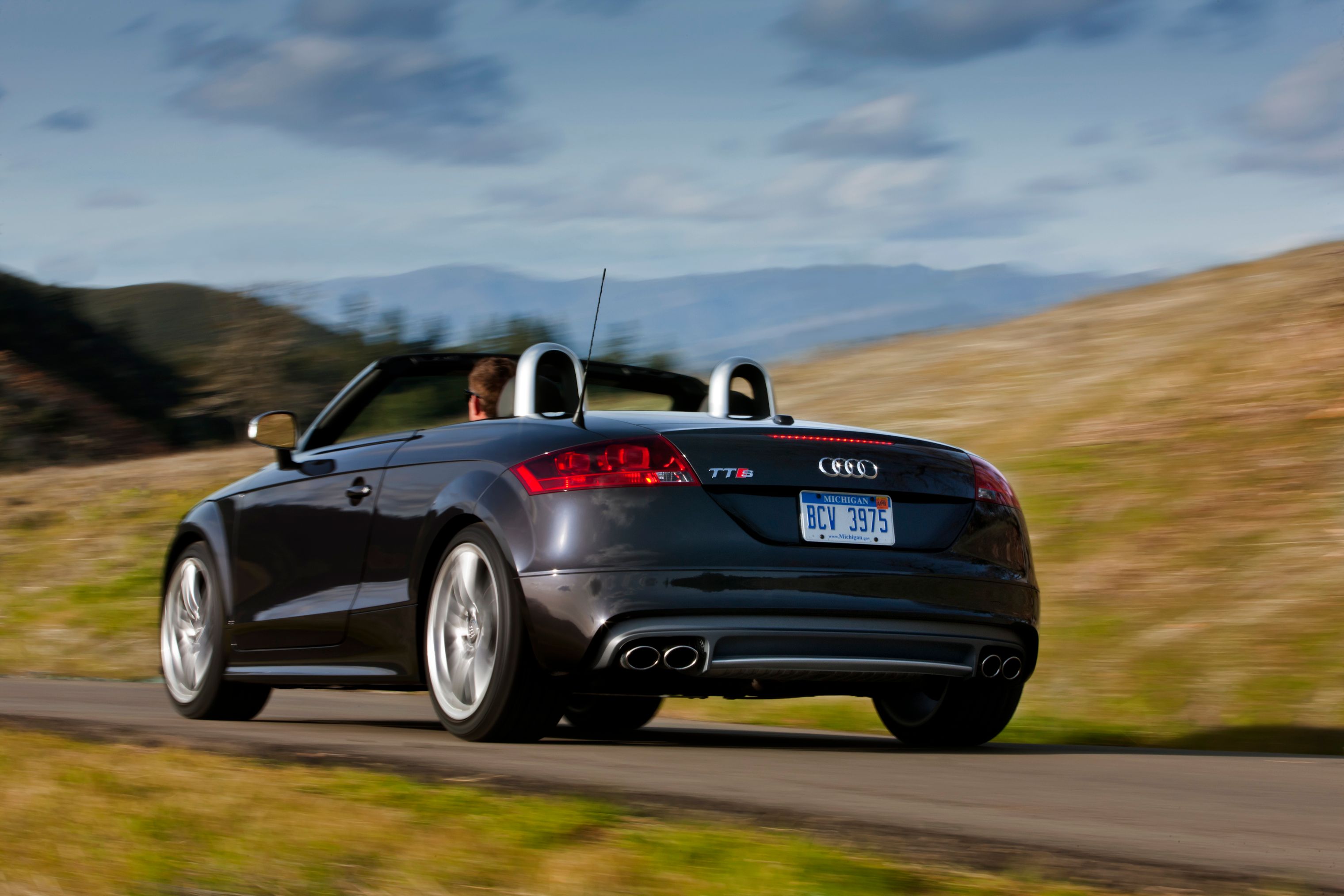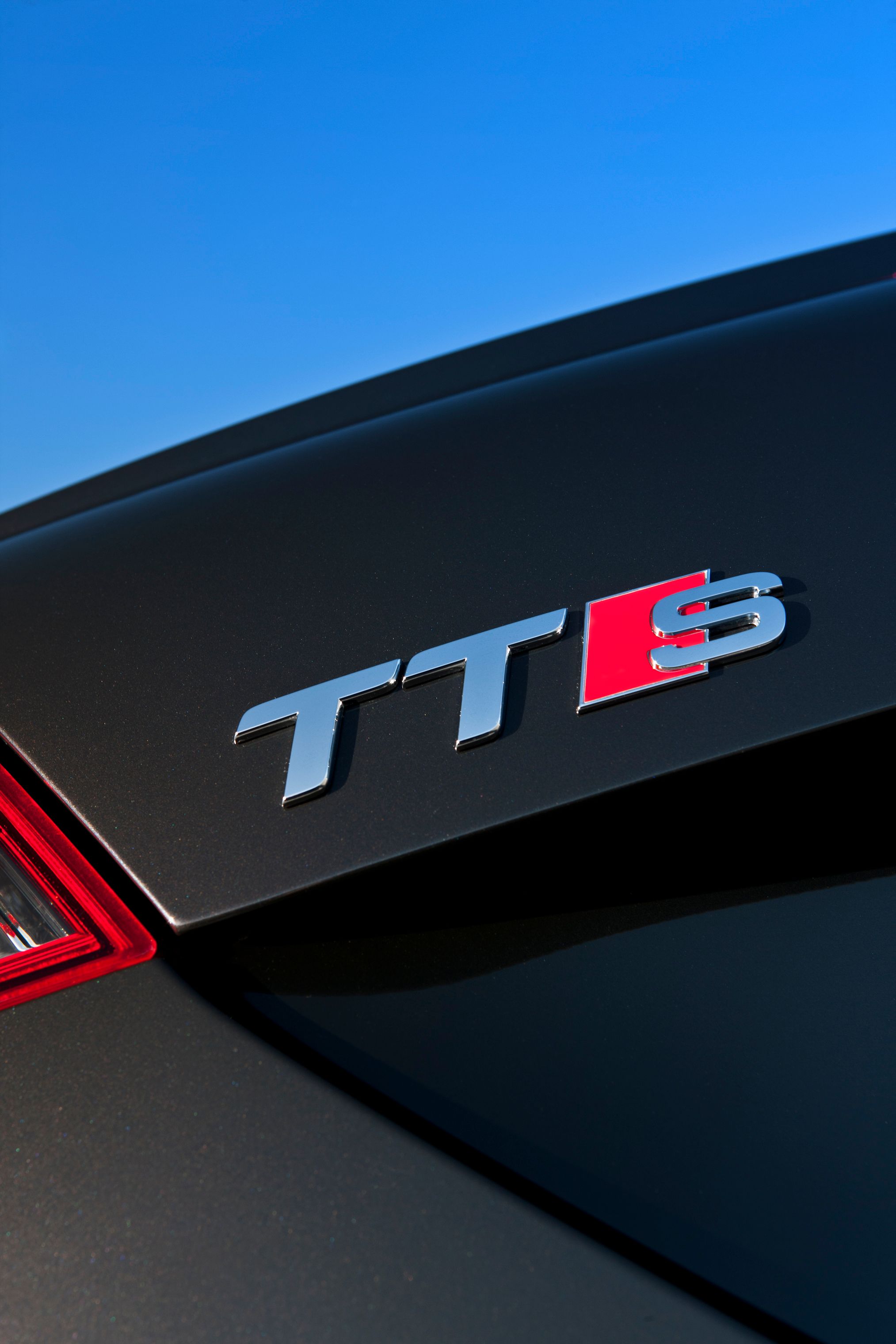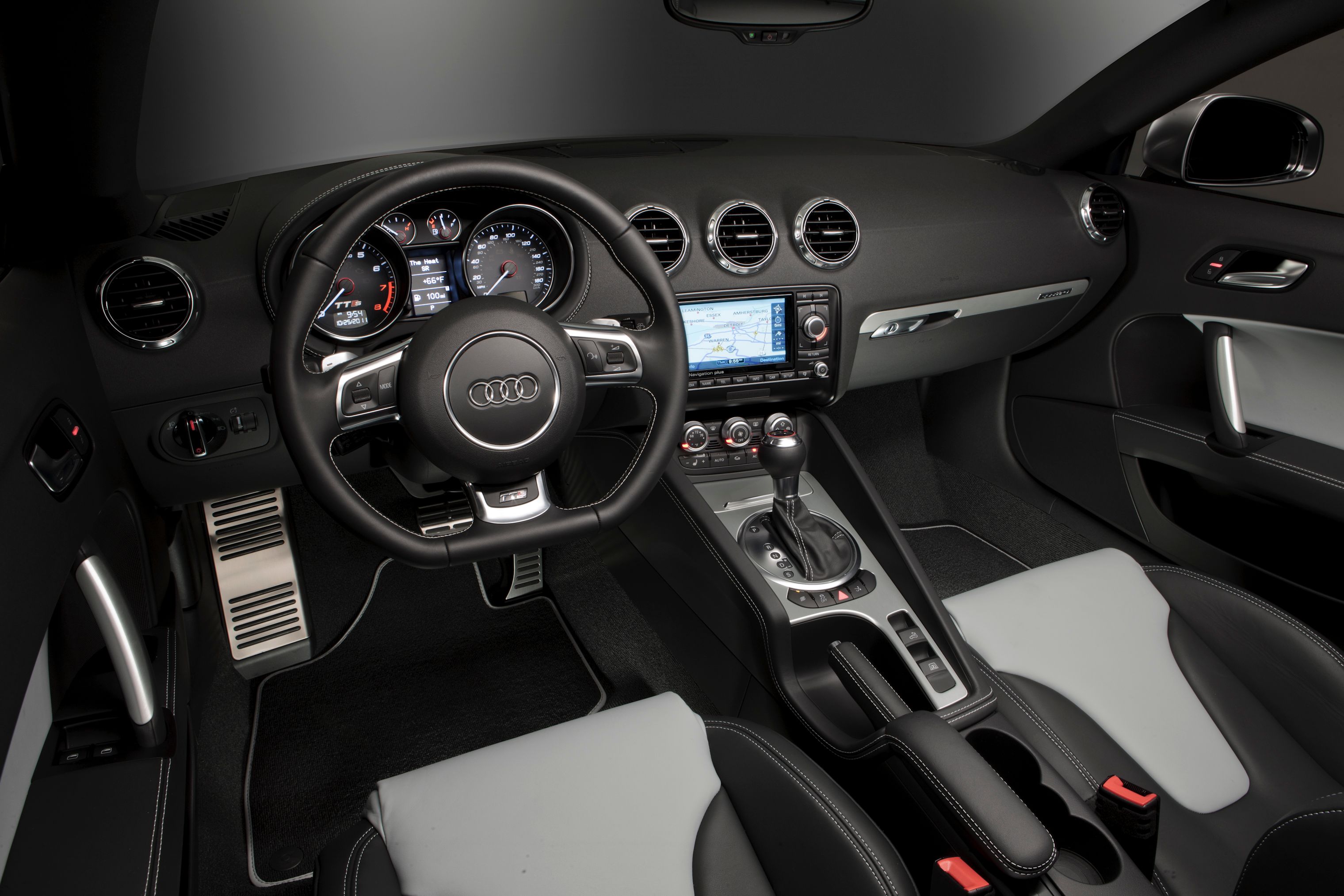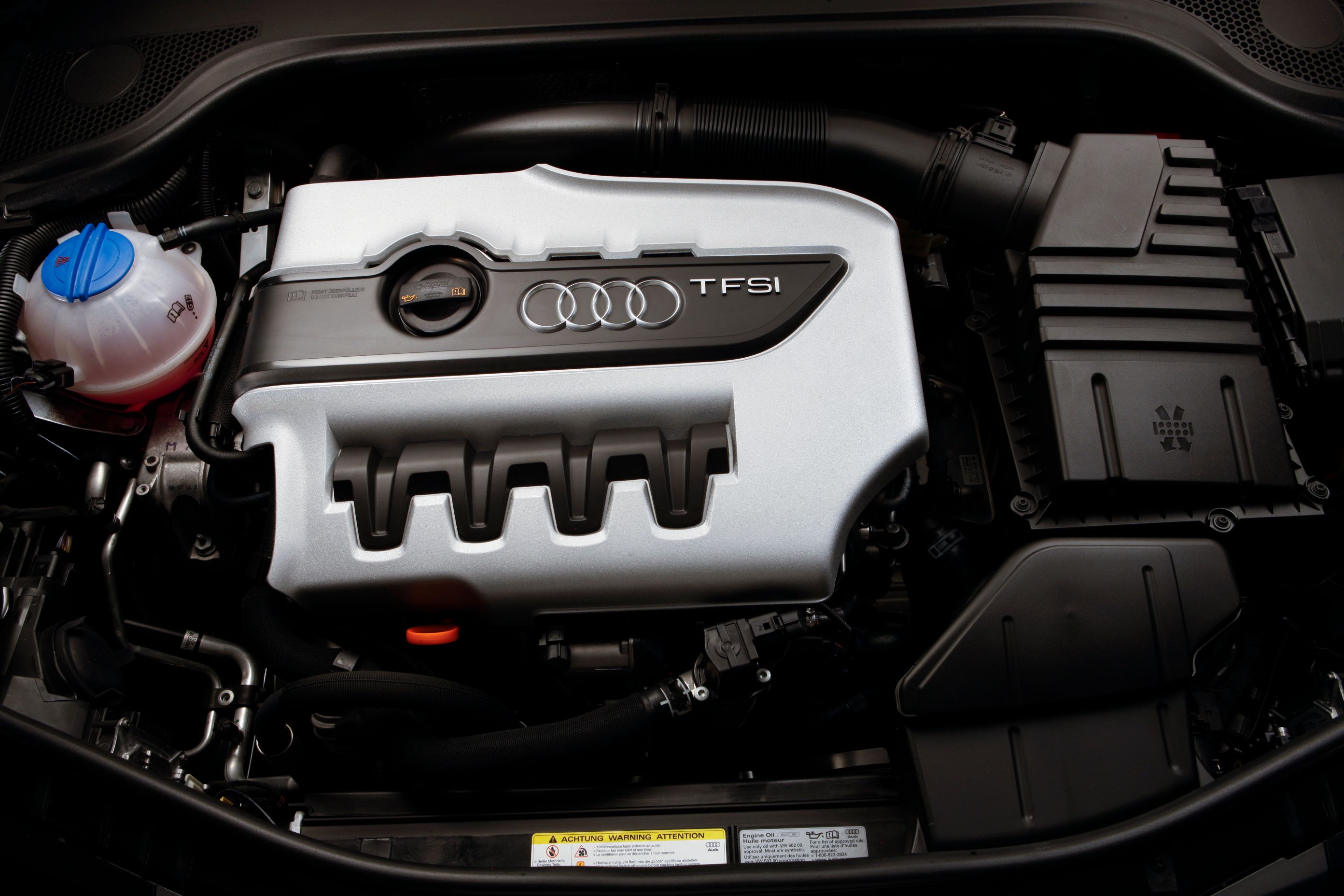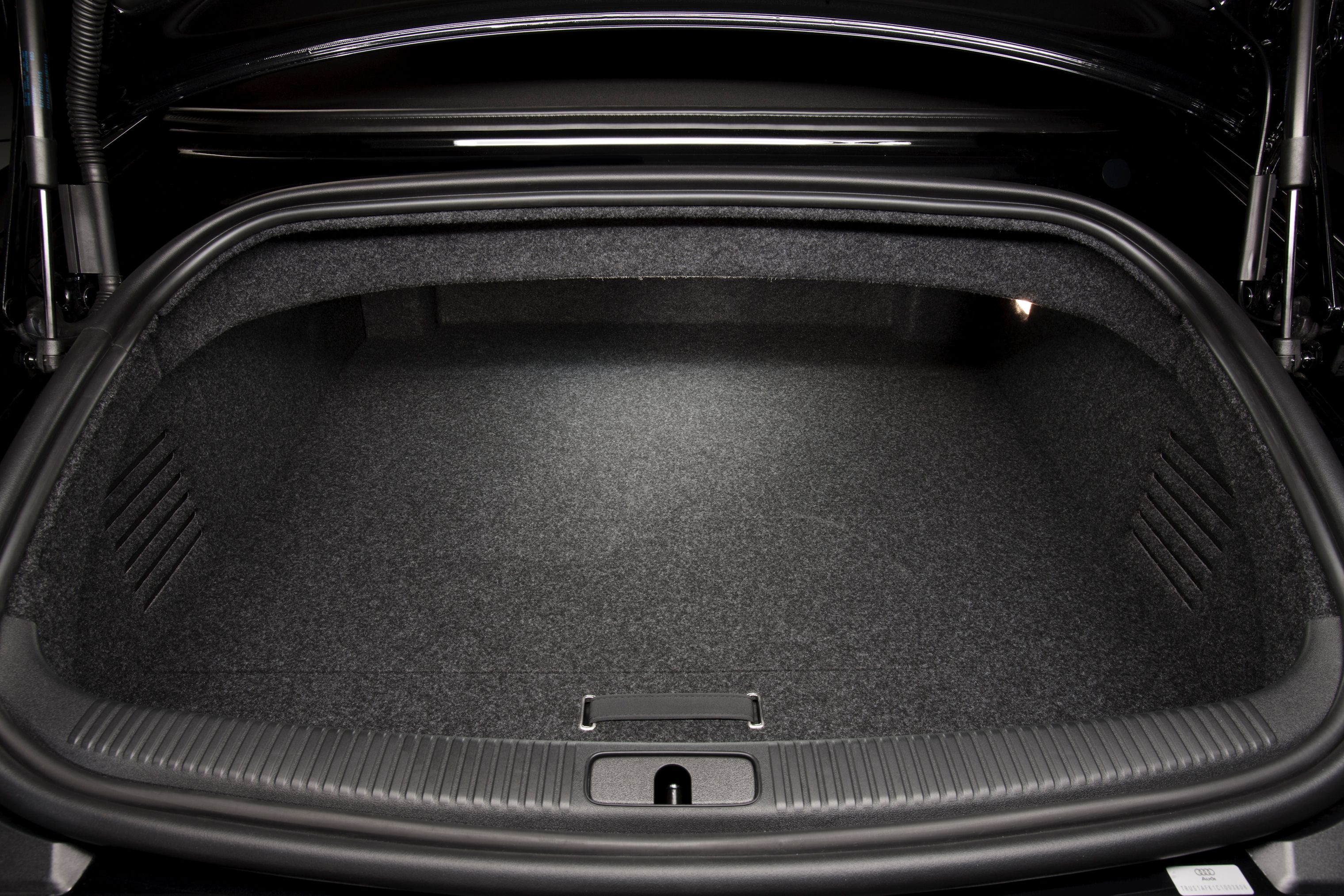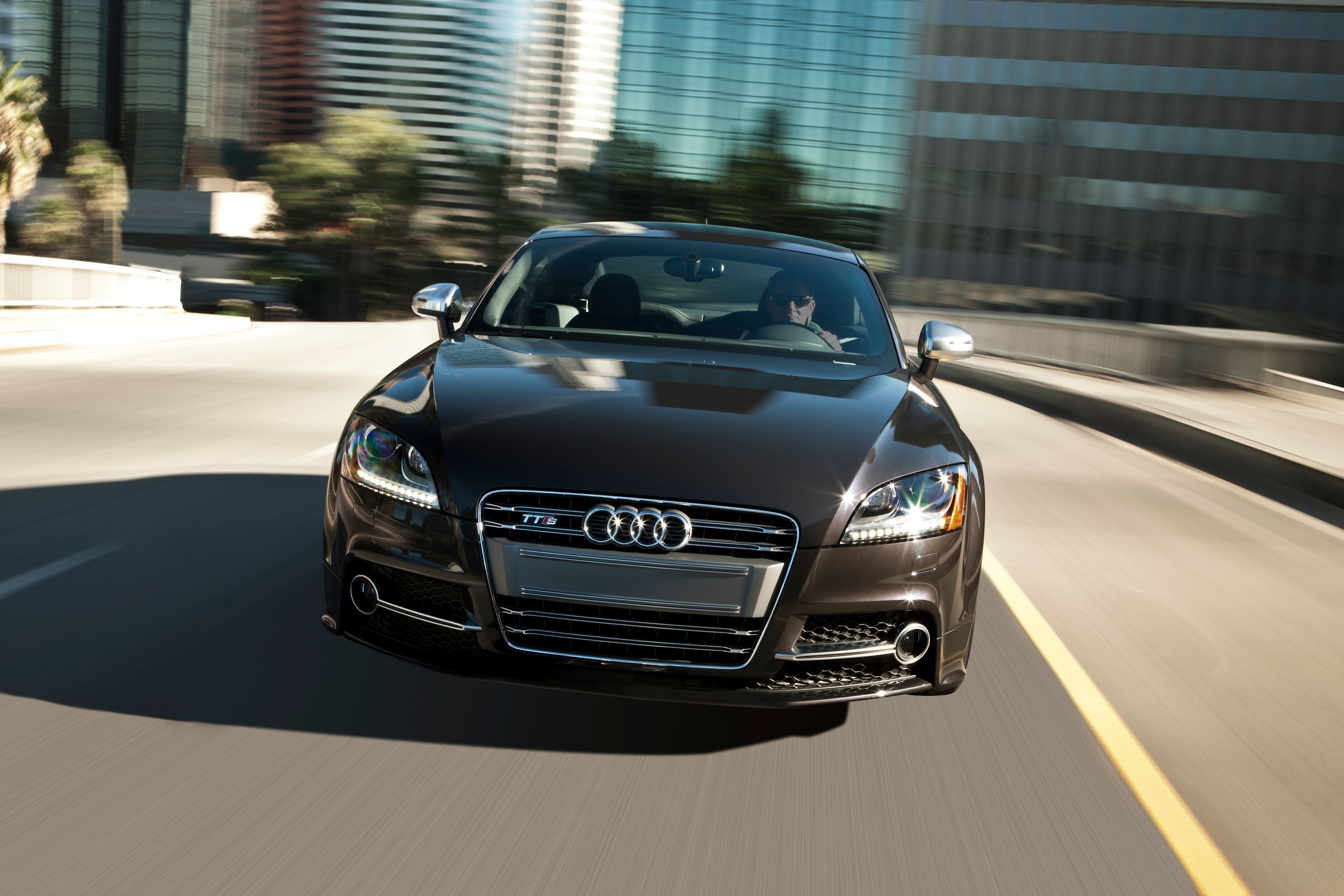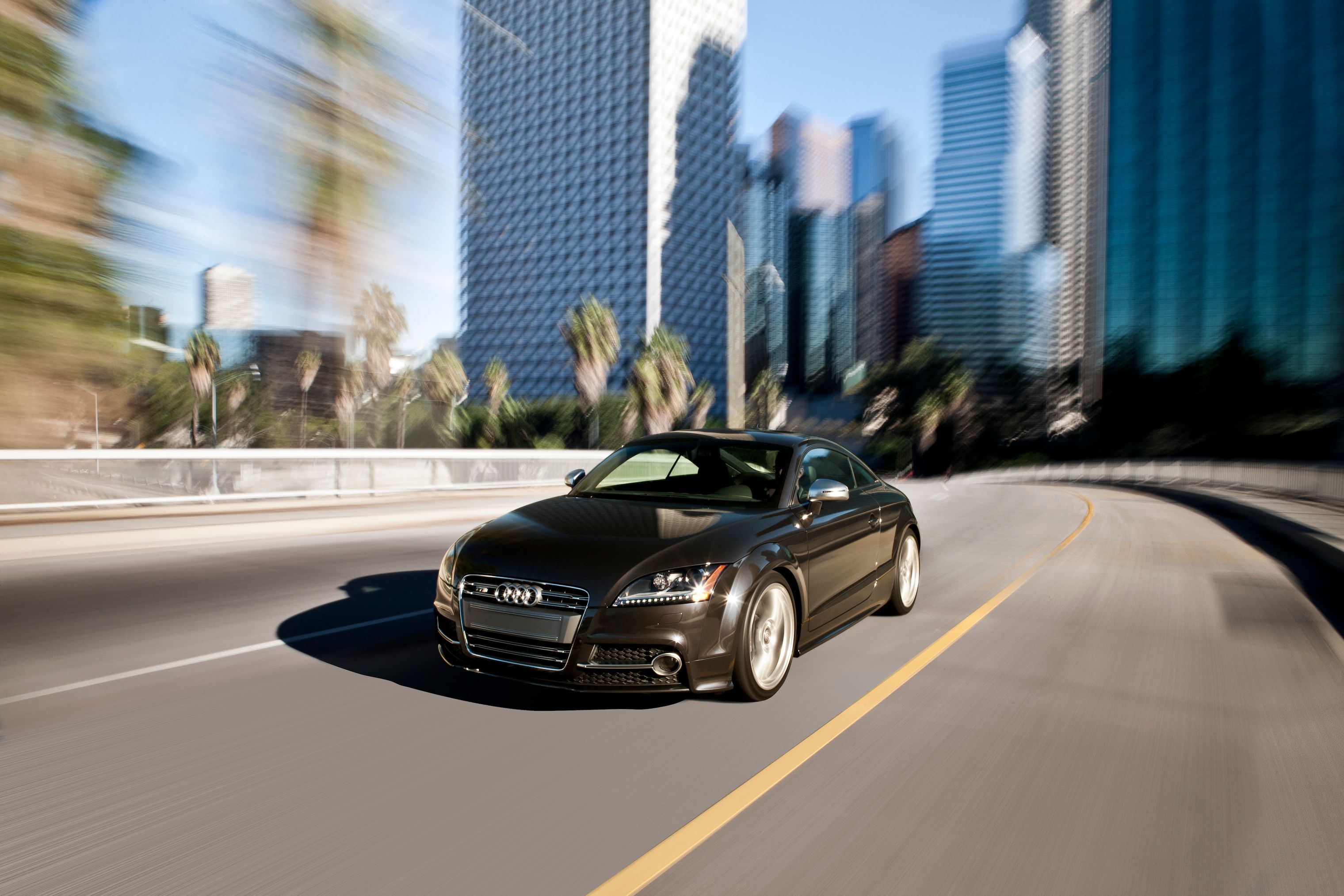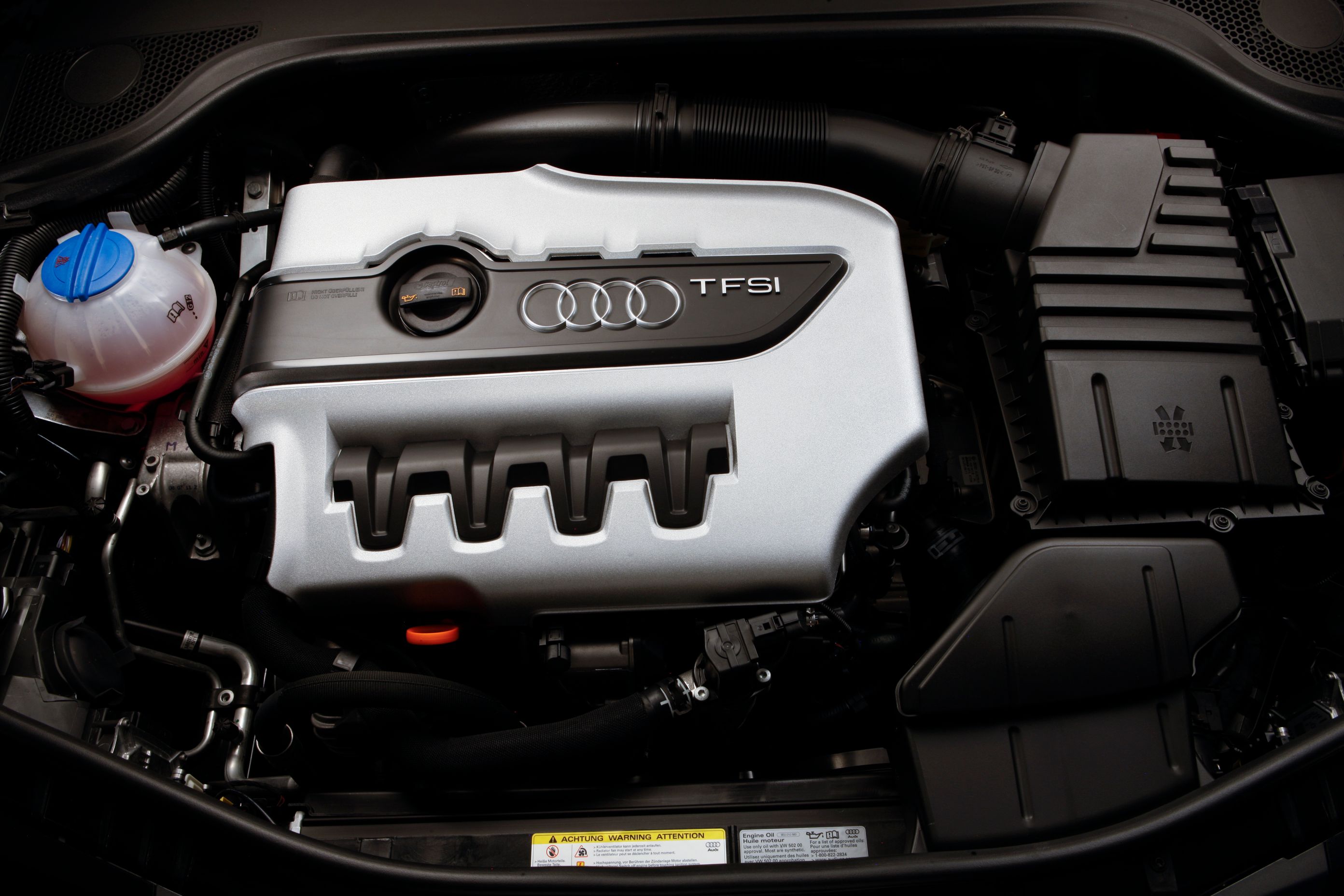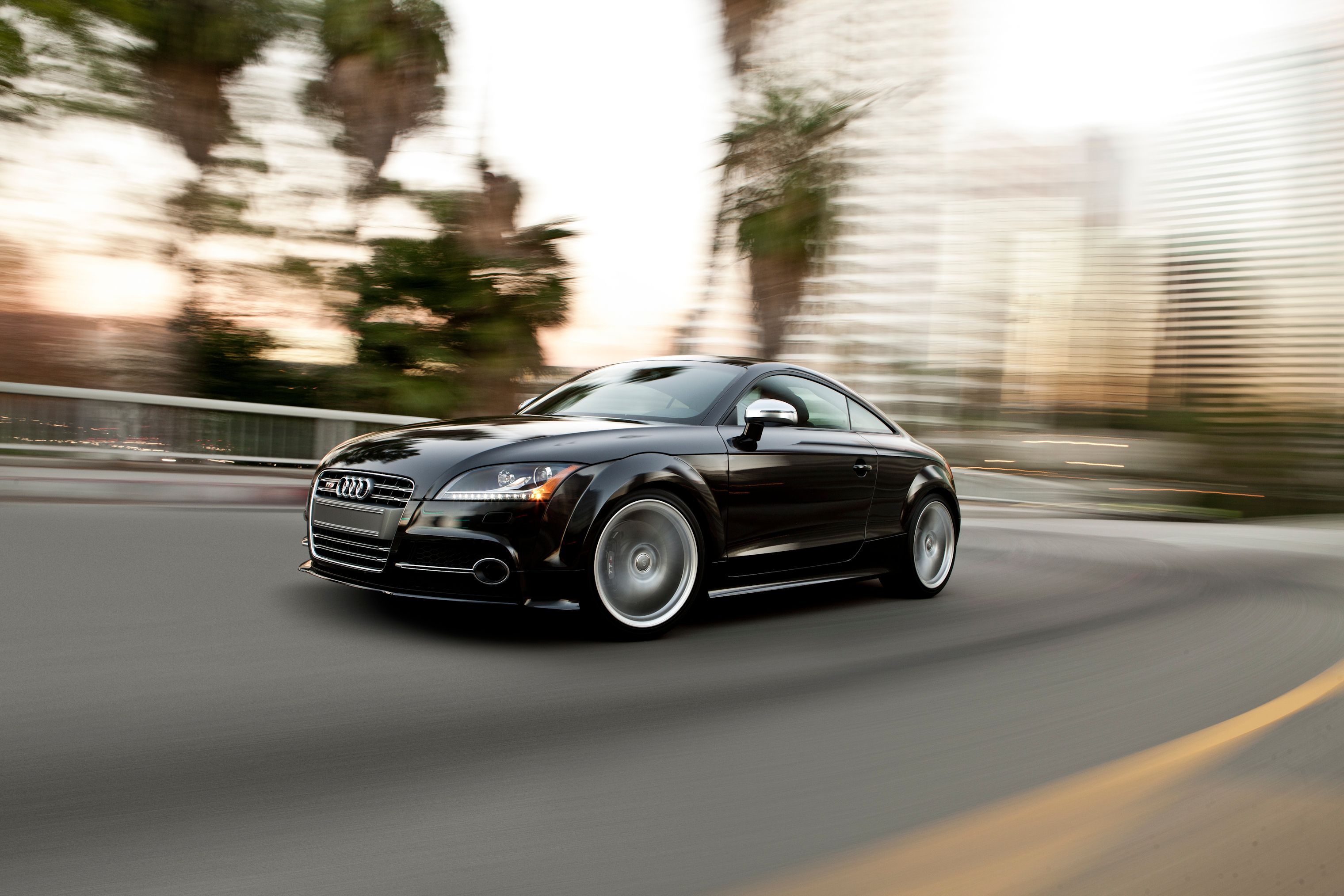To say that the second-generation Audi TT is on its last legs is a massive understatement. It's barely getting by at this point, especially with the recent arrival of next-generation competitors, like the Porsche Cayman.
Granted, it's all part of Audi's->ke14 eight-year cycle and since the second generation TT – including the TTS and TT-RS - arrived in 2006, it's still on schedule to deliver generation three in 2014.
That's the glass half-full way of looking at Audi's TT lineup. The glass half-empty way of looking at it is that the second generation TT is still chugging along, with only minor upgrades given to the 2014 model.
We're confident that Audi's going to come strong with the next-generation TT. It always does. It's just that we'll all have to wait for that day to come.
For now, it’s just another TT facelift and to its credit, Audi did the best it could to give it that modern look. And sometimes, that really is the most it can do.
Click past the jump to read about the 2014 Audi TTS
2014 Audi TTS
- Make: Array
- Model: 2014 Audi TTS
- Engine/Motor: inline-4
- Horsepower: 265
- Torque: 258
- Transmission: six-speed Tiptronic
- [do not use] Vehicle Model: Array
Exterior
If you're not too worried about the competition, the Audi TTS is still a solid sports coupe and roadster. But in terms of its exterior styling, it's high time for the next-generation model to finally show itself.
The look of the current TTS seems stuck in the past. That's not a surprise, considering that it's already 8-years old and is definitely on its last legs.
There are still some notable features, like the single-frame grille, the LED lights and the overall swooping dimensions. But it's still ripe for a change and until the next-generation TTS shows up, there's no overly significant value to current TTS' exterior styling.
Exterior Specifications
|
Wheelbase (in) |
97.2 |
|
Length (in) |
165.3 |
|
Height (in) (Coupe/Roadster) |
53.0 / 53.1 |
|
Width (in) |
72.5 |
|
Track front/rear (in) |
61.2 / 60.9 |
|
Curb weight (lb) (Coupe/Roadster) |
3,219 / 3,395 |
|
Drag coefficient (Coupe/Roadster) |
0.31 / 0.33 |
Standard Exterior Equipment
-Audi Single-frame grille with/without license plate holder
-Xenon plus headlights with LED daytime running light technology
-Automatic headlight-range adjustment
-Lights Styling package: Front assembly chrome trim, rear dark red lens
-Rain/light sensors for automatic windshield wipers and headlights
-Front fog lights
-LED taillight technology with white reverse lights
-“Three Blink” touch-to-pass lane change feature in turn signal
-Power-adjustable, auto-dimming, heated side mirrors, manual folding
-Body-color outside mirrors; heated with LED turn signal repeaters
-Heated windshield washer nozzles
-Dual exhaust pipes, finished tips (one on each side)
-Speed-deployed electric rear spoiler, with manual override (deploys at 75 mph, retracts at 50 mph)
-Power convertible acoustic roof (Roadster only)
-Power operated wind deflector (Roadster only)
-Roll bars with aluminum trim (Roadster only)
-TT S front bumper, rear bumper, rocker panel and diffuser
Interior
For all the flak the body of the TTS is getting, you can't take away from the fact that its interior space is still its biggest strength. Whether it's the use of top-quality materials, like Nappa Leather, or the careful design placement of its navigation system, the balance by which the interior of the car was designed is no accident.
The sporty front seats of the sports coupe are comfortable and supportive, an important characteristic that Audi wisely paid careful attention to. The rear seats, though, are an entirely different matter. If you're a large person, good luck trying to be comfortable folding your legs into the back of the TTS. The best way to treat those rear seats is to just fold them flat, thus creating more space for the trunk to the tune of almost 24 cubic feet.
Unique to the roadster is the folding top cloth, which as you can imagine, is a little outdated compared to the retractable hardtops on its competitors. That's something we can't do anything about. Just wait for the next-gen model, right?
Interior Specifications
|
Head room (front/rear) (in) |
Coupe: 37.2 / 32.6 / Roadster: 37.6 |
|
Leg room (front/rear) (in) |
Coupe: 41.1 / 29.2 / Roadster: 41.1 |
|
Shoulder room (front/rear) (in) |
Coupe: 53.2 / 47.5 / Roadster: 53.2 |
|
Luggage capacity (cu ft) |
Coupe: 13.1 / Roadster: 8.83 |
|
Luggage capacity (cu ft) (2nd row folded) |
Coupe: 24.7 |
|
Seating capacity (Coupe/Roadster) |
2 + 2/2 |
Standard Interior Equipment
-Illumination for interior door release handles and air vent controls
-Aluminum shift knob
-Power central locking system with radio-operated key fob remote control for doors, trunk with selective unlocking
- Master switches located in driver and front passenger doors, includes LEDs to signal when vehicle is locked
-Fully automatic climate control
-Flat bottom three-spoke multifunction steering wheel with S tronic shift paddles
-Brushed aluminum decorative interior inlays
-Aluminum door sill inserts with S logo
-Silk Nappa leather seats (bi-color or black)
-Ten-way power seats, sport seats including four-way power lumbar adjustment with thigh support
-50/50 folding rear seats (Coupe only)
Performance
The Audi TTS comes powered by a 2.0-liter inline-four engine that produces a tidy 265 horsepower at 6,000 rpm and 258 pound-feet of torque at 2,500 rpm. With those performance numbers in tow, the slightly lighter coupe version can hit 60 mph in just 4.9 seconds with the roadster version capable of doing the same at 5.1 seconds. Despite the coupe model being slightly faster to 60, both versions carry the same electronically limited top speed of 155 mph.
Engineering/Performance Specifications
|
Engine Type |
Four cylinder |
|
Arrangement |
Front mounted - Transverse |
|
Bore (in) |
3.25 |
|
Stroke (in) |
3.65 |
|
Displacement (cc) |
1,984 |
|
Compression ratio |
9.8:1 |
|
Horsepower @ rpm |
265 @ 6,000 rpm |
|
Torque @ rpm (lb-ft) |
258 @ 2,500 rpm |
|
Induction/Fuel injection |
Turbocharged / TFSI |
|
Acceleration (0-60 mph)* (Coupe/Roadster) |
4.9 / 5.1 |
|
Top track speed (electronically limited)* (mph) |
155 |
Suspension/Chassis
Suspension duties on the Audi TTS are handled by a five-link suspension with a stabilizer bar on the front end and a four-link suspension with separate spring/shock absorber on the rear. Likewise, a magnetic ride suspension is available for both versions.
Suspension/Chassis
|
Ventilated front disc/solid rear disc brakes (in) |
12.2 |
|
Ventilated front disc/ventilated rear disc brakes (in) |
13.4 |
Pricing
The pricing for the Audi TTS are as follows:
|
Model |
Premium Plus |
Prestige |
|
2014 Audi TTS Coupe |
$47,350 |
$50,650 |
|
2014 Audi TTS Roadster |
$50,350 |
$53,650 |
Competition
2014 Porsche Cayman/ 2013 Porsche Boxster
Unfortunately for the Audi TTS, the Porsche Cayman and the 2014 Boxster belong in the same market segment. That's bad news because no matter how enticing the TTS is as an entry-level sports car, it still has to deal with a Cayman model that masterfully crafts all the appealing elements of a Porsche into a cheaper - and less powerful - version of the iconic 911.
The Cayman's design doesn't deviate too far away from Porsche's classic styling language. That's a great thing considering that people who love Porsche's love it for its classic looks wrapped around its modern technology.
The Cayman’s powertrain also has the leg up over the TTS, thanks to its 2.7-liter flat-six engine that develops 275 horsepower with a 0 to 60 mph time of 5.1 seconds with the PDK and Sport Chrono and a top speed of 165 mph (164 mph with PDK). The manual transmission raises the acceleration time to 5.4 seconds and PDK does the same in 5.3 seconds.
The Boxster, on the other hand, is still in its 2013 garb, to date. In its base format, the Boxster’s 2.7-liter flat-six produces 265 horsepower. With a manual transmission, the Boxster hits 60 mph in 5.5 seconds. The PDK transmission drops this time to 5.4 seconds and Sport Chrono combined with the PDK lowers its acceleration time to 5.2 seconds.
The TTS really is stuck between a rock and a hard place, an unenviable position that Audi has surprisingly left it to. See, if people don't have the finances to buy a TTS or a Cayman, they can always opt for something a lot more affordable in the form of a Nissan 370Z in coupe or roadster format.
It may not have the cache of German engineering, but rest assured, this Japanese spitfire can match wits with the TTS any day, thanks in part to its 3.7-liter VQ37VHR engine that delivers a total of 332 horsepower and 270 pound-feet of torque. Those numbers translate to the 370Z comfortably hitting 60 mph in just 4.5 seconds with a top speed of 155 mph in coupe format. In its drop-top format, the 370Z hits 60 mph in just 4.9 seconds.
Oddly enough, the 370Z certain look to be a better performer on paper. Then again, we all know that Audi loves to understate its lower and mid-rage models’ performance numbers to make the top-line RS models look better.
Conclusion
It’s a tough place to be in when you're competing against cars that are either more powerful, more affordable, and in some cases, both. The TTS has plenty going for it,that much we can say. But not when you line it up against the rest of the market segment.

